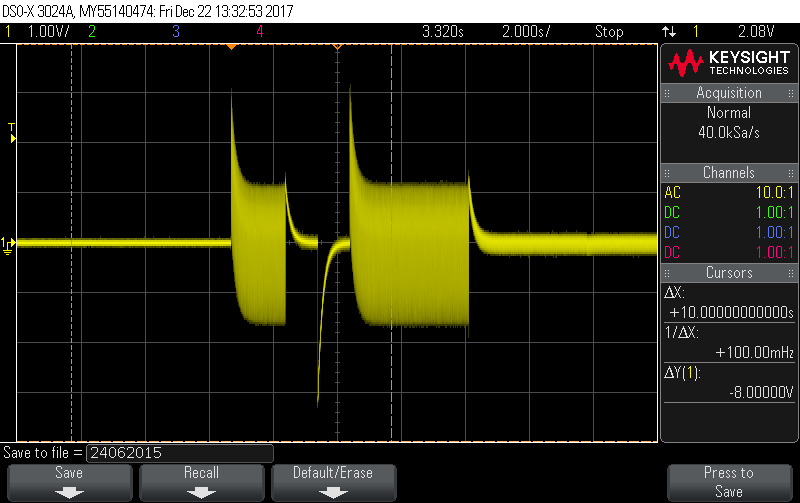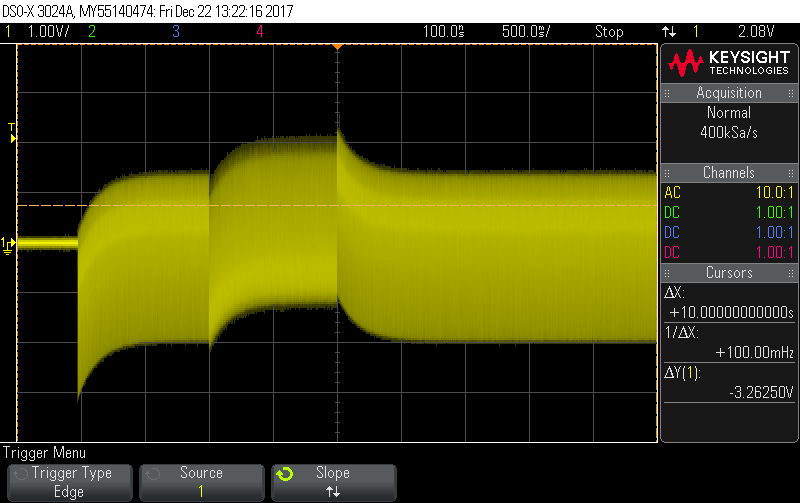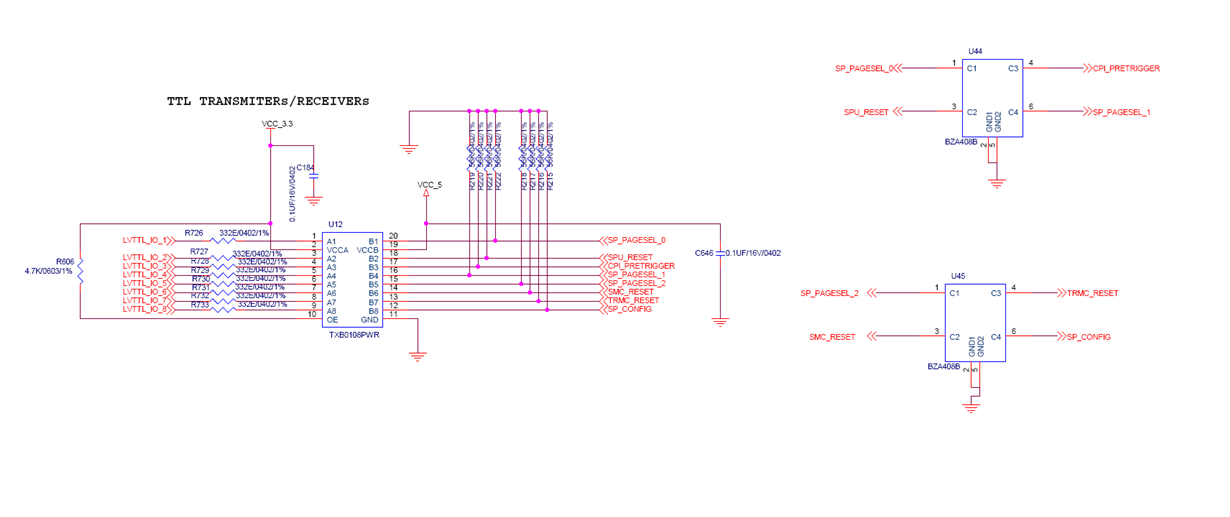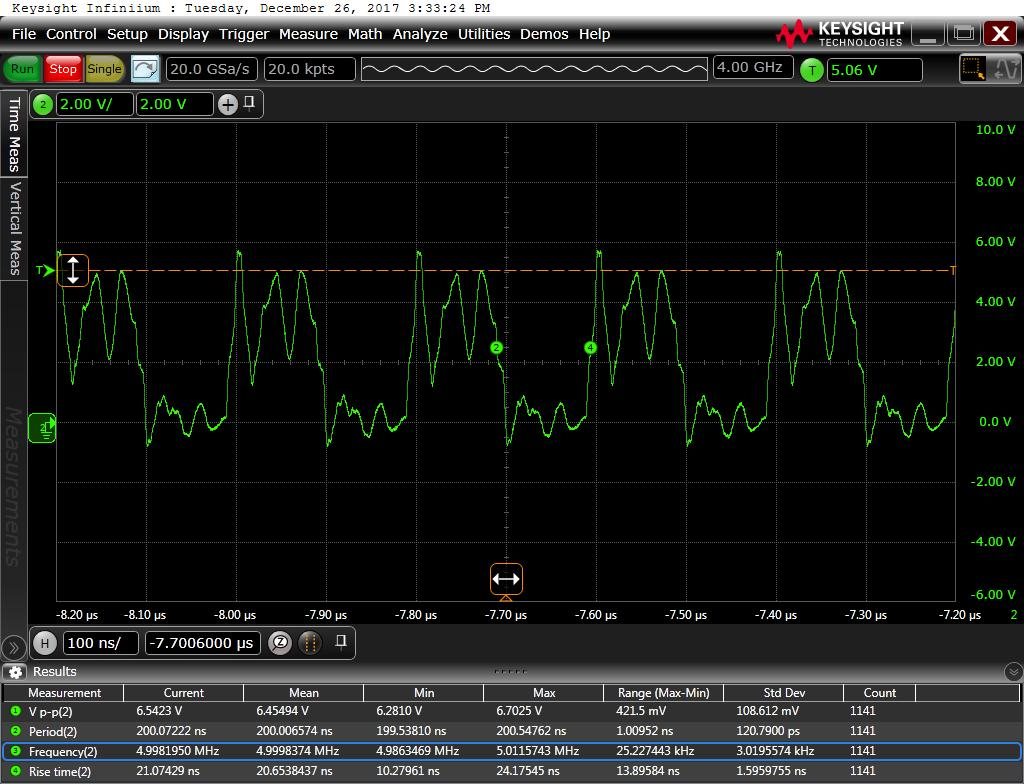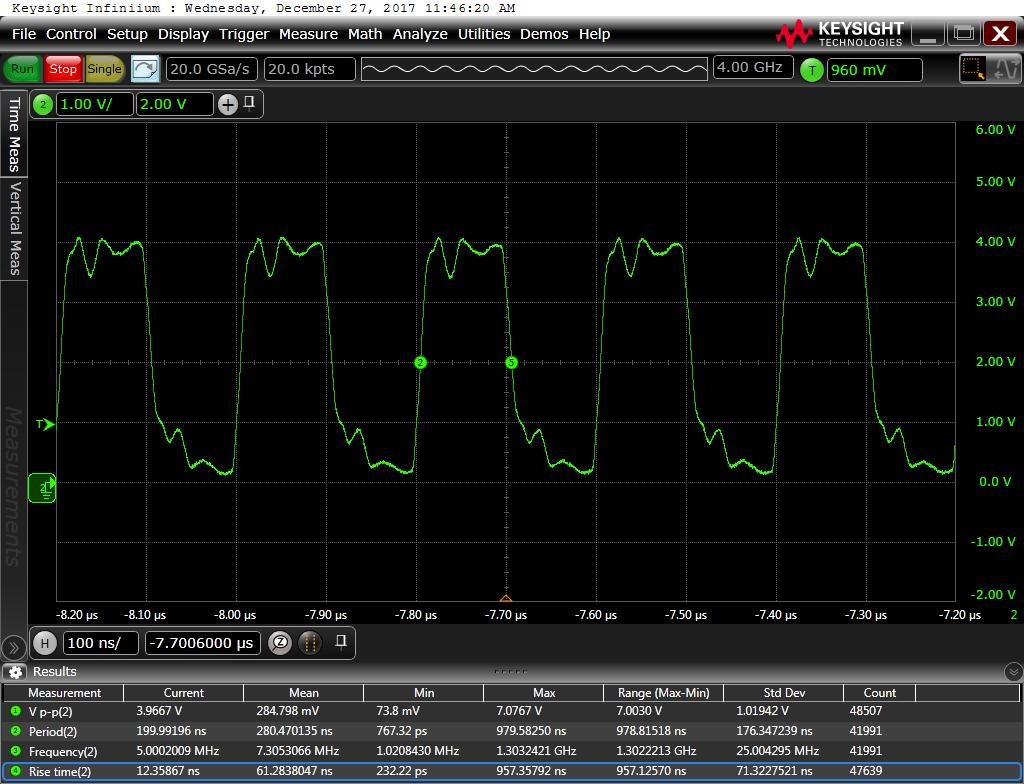Hi
We are using TXB0108 in one of our project.
When tested independently on oscilloscope and when loopbacked with same buffer other signals, the waveform transactions are ok.
But when card is connected in a System with other cards, where signal from TXB0108 are going out to other card then there is unwanted oscillations on the signal.
What could be the issue?
Pls check snapshots and Buffer circuit.
Need to check this closely as our many boards are using this buffer.
Regards


